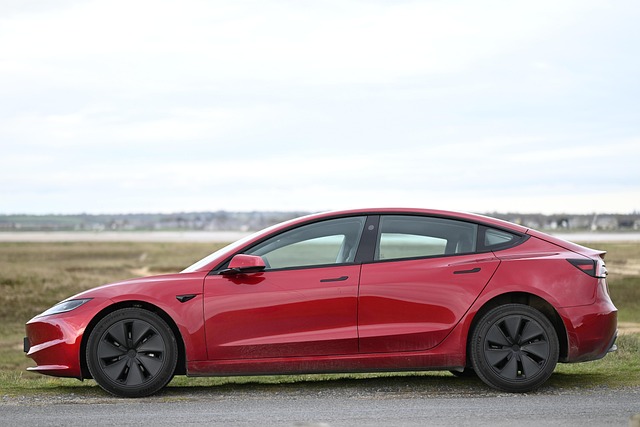Green Energy Innovations: Shaping Tomorrow’s Technologies
As the world grapples with the pressing issues of climate change and environmental degradation, the urgent need for sustainable energy solutions has become more critical than ever. Green energy innovations are at the forefront of this transformation, pioneering new technologies that promise to reshape our energy landscape and enable a more sustainable future. This article will explore the latest advancements in green energy technologies, the challenges they face, and the opportunities they present in our efforts to transition to a greener economy.
The Rationale Behind Green Energy
Green energy refers to energy derived from renewable, zero-emission resources capable of being replenished naturally. This includes solar, wind, hydro, geothermal, and biomass energy. Traditional energy sources such as fossil fuels contribute to greenhouse gas emissions, air pollution, and other environmental concerns. In contrast, green energy provides a pathway to reduce emissions, create jobs in new industries, and stimulate economic growth while preserving our planet for future generations.
Key Innovations in Green Energy Technologies
The landscape of green energy is continuously evolving with the emergence of innovative technologies that enhance efficiency, reduce costs, and improve accessibility. Here are some of the most impactful innovations making waves in the industry:
Solar Energy Advancements
Solar energy has seen significant technological advancements aimed at increasing efficiency and affordability. Innovations include:
1. **Perovskite Solar Cells**: These next-generation solar cells, made from a unique crystalline structure, have the potential to achieve higher efficiencies than traditional silicon-based solar cells. Their low production costs and versatility in application could revolutionize solar power generation.
2. **Building-Integrated Photovoltaics (BIPV)**: BIPV technology integrates solar panels directly into building materials, such as windows and roofs. This not only saves space but also enhances the aesthetic appeal of buildings while contributing to energy generation.
3. **Solar Energy Storage Systems**: The development of more efficient energy storage solutions, such as advanced lithium-ion batteries and new solid-state batteries, is critical for overcoming the intermittent nature of solar energy. Effective storage technologies allow for the use of solar energy even when the sun is not shining.
Wind Energy Innovations
Wind energy has also benefited from a wave of innovations, improving both offshore and onshore wind farms:
1. **Floating Wind Turbines**: These turbines are anchored to the seabed and can operate in deeper waters, where wind speeds are often higher and more consistent. Floating wind technology expands the potential for wind energy generation significantly.
2. **Vertical Axis Wind Turbines (VAWTs)**: Unlike traditional horizontal wind turbines, VAWTs can harness winds from any direction and are less affected by turbulence. This makes them suitable for urban environments and small-scale applications.
3. **Advanced Turbine Design**: The advent of larger, more efficient turbine designs, incorporating lighter materials and improved aerodynamics, enables wind farms to generate more energy with fewer turbines.
Hydropower Innovations
Hydropower remains one of the most significant sources of renewable energy globally. Innovative approaches are making hydropower cleaner and more sustainable:
1. **Small-Scale Hydropower**: Innovations in micro-hydropower systems allow for energy generation in off-grid locations. These systems are viable for small communities, reducing reliance on fossil fuels and providing local energy solutions.
2. **Hydropower with Fish Passes**: New designs are focused on minimizing the environmental impact of hydropower plants, such as incorporating fish passes and environmentally-sensitive turbine designs that reduce harm to aquatic life.
Geothermal Technology Enhancements
Geothermal energy taps into the earth’s heat, making it a reliable source of renewable energy. Advancements include:
1. **Enhanced Geothermal Systems (EGS)**: EGS technology utilizes processes to extract heat from hot dry rocks deep underground. This method increases the potential locations for geothermal energy extraction, making it more widespread.
2. **Geothermal Heat Pumps**: These systems harness the earth’s stable underground temperatures to regulate building temperatures efficiently. Such installations significantly reduce energy consumption in heating and cooling applications.
Biomass and Biofuels Innovations
Biomass energy, derived from organic materials, continues to evolve through innovative processes:
1. **Advanced Biofuels**: The development of second and third-generation biofuels from non-food sources, such as algae, agricultural waste, and municipal solid waste, reduces competition for food resources and provides a sustainable energy alternative.
2. **Waste-to-Energy Technologies**: These technologies convert waste materials into energy through methods like anaerobic digestion or gasification, serving a dual purpose of waste management and energy generation.
The Role of Energy Efficiency Technologies
In addition to renewable energy technologies, energy efficiency plays a crucial role in shaping a sustainable energy future. Innovations in this area include:
1. **Smart Grid Technology**: Smart grids enhance electricity distribution and consumption through real-time data analysis. They enable better energy management, allowing consumers to shift their energy usage based on demand and availability.
2. **Home Automation Systems**: Smart home technologies facilitate better energy management through automation, allowing users to optimize energy use for heating, cooling, and lighting based on occupancy and time-of-day.
Challenges to Adoption and Implementation
Despite the promising developments in green energy technologies, several challenges impede their widespread adoption:
1. **Financial Barriers**: Initial investment costs for renewable energy installations can be significant, and financing mechanisms must evolve to support widespread adoption.
2. **Infrastructure Needs**: Existing energy infrastructure may require substantial upgrades to integrate renewable energy sources effectively, including the expansion of energy storage and distribution networks.
3. **Regulatory Hurdles**: Policies and regulations vary widely across regions, and the energy market’s slow adjustment to new technologies can slow progress. Governments must create supportive regulatory frameworks to encourage innovation and investment in green energy.
Looking Toward the Future
The future of green energy lies in the continuous advancement of these technologies, facilitating a transition to a more sustainable and equitable energy landscape. We must invest in research and development, foster partnerships across sectors, and embrace innovative financing solutions to overcome barriers. The potential for green energy innovations to mitigate climate change impacts, provide energy security, and foster economic growth is vast.
Conclusion
Green energy innovations are not merely a trend but a vital response to the challenges facing our planet. As technologies evolve and new ideas are developed, we can envision a world powered by clean, renewable energy. By prioritizing sustainability within technological advancements, society can reshape tomorrow’s energy systems for a cleaner, healthier future. The journey toward a greener world requires collective effort, investment, and a bold vision for what is possible.
In embracing green energy innovations, we not only pave the way for a sustainable energy future but also ignite hope and inspire a global movement toward responsible stewardship of our planet. As we strive to innovate, educate, and advocate for sustainable practices, we are ensuring that tomorrow’s technologies reflect the values of care and responsibility for our environment.




